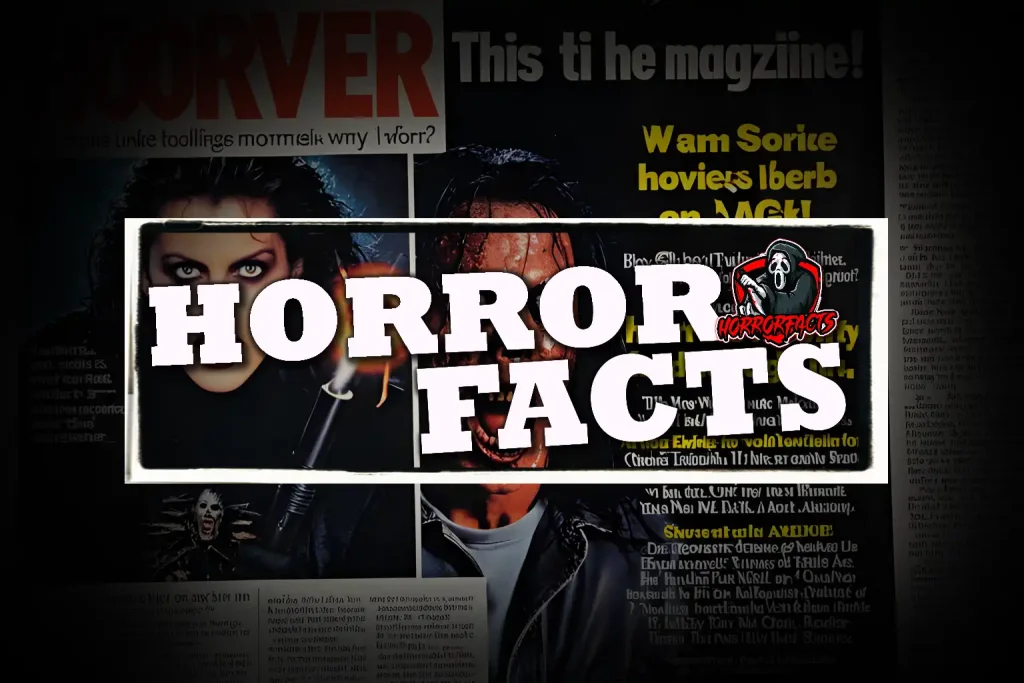Wes Craven. The name itself is a horror movie marquee, promising a night of jump scares, iconic villains, and razor-sharp social commentary. From the dream-stalking Freddy Krueger to the meta-slasher genius of “Scream,” Craven wasn’t just a horror director; he was a genre-bending auteur who redefined what it meant to be scared. But beyond the iconic burnt face and clawed glove lies a fascinating life story.
Prepare to be surprised by these 25 chilling facts that unveil the man behind the horror mask, the Sultan of Slash Street himself, Wes Craven.
Early Days and Unexpected Turns:
- A Master with Many Hats: Before becoming a horror legend, Craven wore many hats! He earned a Masters degree in Philosophy and even taught high school English for a year.
- From Editing to Directing: Craven’s first foray into film wasn’t directing. He started in the industry as a film editor, working his way up from low-budget projects.
- A Shocking Debut: Craven’s directorial debut wasn’t exactly a horror masterpiece. His first film, “The Last House on the Left” (1972), is a brutal and disturbing revenge thriller.
- Horror with Heart: Despite the violence in his films, Craven often explored deeper themes. “The Last House on the Left” tackles the trauma of violence and the lengths people go to for revenge.
- Independent Vision: Craven never shied away from challenging the status quo. Many studios initially balked at the graphic nature of “The Last House on the Left,” but Craven remained firm in his vision.
Trivia Time!
Did you know? Wes Craven originally envisioned the iconic “Nightmare on Elm Street” villain, Freddy Krueger, as a short, child-like monster with a sea monster hat! Thankfully, the design team convinced him to go with the now-iconic burnt and scarred look.
The Birth of a Nightmare Legend
- Elm Street’s Inspiration: The terrifying concept for “A Nightmare on Elm Street” (1984) stemmed from a series of real-life nightmares Craven heard about from teenagers. They all described vivid dreams of a faceless man chasing them, and some even reported waking up paralyzed with fear.
- Freddy’s Name Game: The character of Freddy Krueger was almost christened “Fred Krueger,” but a last-minute change added the unsettling double “d” sound.
- Low Budget, High Impact: Due to budget constraints, the iconic Freddy Krueger boiler room scene was filmed in just one day!
- Empowering the Final Girl: Unlike many horror films of the era, Craven’s heroines were strong and resourceful. Nancy Thompson (played by Heather Langenkamp) in “A Nightmare on Elm Street” actively fights back against Freddy, becoming a classic “final girl.”
- A Franchise is Born: The success of “A Nightmare on Elm Street” spawned a massive franchise, with numerous sequels, a reboot, a television series, and even a crossover with another horror icon, Jason Voorhees from “Friday the 13th.”
Trivia Time!
Wes Craven was initially hesitant to direct “Scream” (1996). He felt he’d done enough with the slasher genre. However, the clever and meta-referential script by Kevin Williamson convinced him to return and breathe new life into the genre.
11. Genre-Bending Genius: While “A Nightmare on Elm Street” cemented Craven’s place in horror history, he wasn’t afraid to venture beyond the genre. He directed films like “The People Under the Stairs” (1991), a social commentary disguised as a dark fantasy horror, and “Music of the Heart” (1999), a heartwarming drama starring Meryl Streep.
12. A Master of Suspense: Craven understood the power of building suspense. He often employed creative camerawork and editing techniques to keep audiences on the edge of their seats, unsure of what lurked around the corner (or in the dream world).
13. A Voice for the Underdog: Many of Craven’s films featured strong, independent female characters who defied expectations and fought back against their attackers. This focus on empowering heroines resonated with audiences, particularly young women.
14. Scream: A New Era of Horror: “Scream” (1996) was a game-changer. It cleverly satirized the slasher genre while simultaneously offering a fresh take on the formula. The film’s meta-humor and self-awareness resonated with a new generation of horror fans.
15. Leaving a Legacy: Wes Craven passed away in 2015, but his influence on the horror genre remains undeniable. He redefined what it meant to be scared, creating iconic villains like Freddy Krueger and Ghostface, while pushing the boundaries of the genre with his innovative storytelling and social commentary.
Trivia Time!
Did you know? Craven was such a huge fan of Alfred Hitchcock that he even included a subtle homage to the master of suspense in “A Nightmare on Elm Street.” Look closely during the scene where Nancy is researching dream research in the library – there’s a poster for Hitchcock’s “Psycho” hanging in the background!
16. Early Influences: Craven’s strict Baptist upbringing may have surprisingly influenced his later horror works. The religious imagery and themes of guilt and punishment found in some of his films can be seen as a reflection of his early experiences.
17. A Brush with the Law: While working on a low-budget independent film early in his career, Craven was briefly arrested on obscenity charges. The charges were eventually dropped, but the experience highlighted the challenges faced by independent filmmakers pushing boundaries.
18. Teaching the Next Generation: After establishing himself as a horror legend, Craven returned to his academic roots. He taught a filmmaking course at USC’s School of Cinematic Arts, inspiring a new generation of horror storytellers.
19. A Love of Literature: Craven wasn’t just a master of film; he was also a published author. His 1999 novel, “The Fountain Society,” explored themes of immortality and the dark side of human ambition.
20. Superman: Almost?: Believe it or not, Craven was initially attached to direct “Superman IV: The Quest for Peace” (1987). However, creative differences with star Christopher Reeve led to him being replaced.
Trivia Time!
Wes Craven had a cameo appearance in his own film, “Scream” (1996). Can you spot him giving a lecture on the history of horror movies at Sidney Prescott’s school?
Behind the Mask, a Man of Depth
- A Passion for Philosophy: Despite the dark and disturbing nature of many of his films, Craven’s background in philosophy is evident in the deeper themes explored throughout his work. He often used horror as a lens to examine human nature, morality, and the power of fear.
- A Fighter for Creative Freedom: Craven never shied away from battling studios when it came to protecting his artistic vision. He fought for the originality of his films, even when faced with pressure to conform to more commercially viable tropes.
- A Supporter of Independent Film: Craven remained a champion of independent cinema throughout his career. He understood the importance of giving a platform to new voices and pushing the boundaries of the genre.
- More Than Just Horror: While horror is what Craven is best known for, his filmography showcases his versatility as a filmmaker. He explored different genres, from dark comedies to heartwarming dramas, proving his talent went beyond the realm of nightmares.
- A Legacy of Fear and Innovation: Wes Craven’s impact on horror cinema is undeniable. He created iconic characters, reinvented the genre with his meta-commentary, and used horror to explore deeper societal issues. His legacy lives on, inspiring future generations of filmmakers and horror fans alike.
So there you have it, 25 chilling facts about Wes Craven, the Sultan of Slash Street! These insights offer a glimpse into the man behind the mask, revealing not just a horror maestro, but a thoughtful artist with a unique vision that continues to terrify and enthrall audiences to this day.



























































![Mason Ramsey – Twang [Official Music Video] Mason Ramsey – Twang [Official Music Video]](https://i.ytimg.com/vi/xwe8F_AhLY0/maxresdefault.jpg)






















